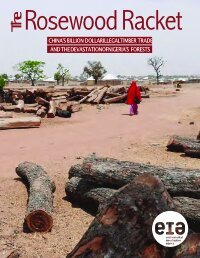By Arnoldo Contreras-Hermosilla
This paper looks at the evidence on the magnitude and impacts of forest illegal acts, examines the vulnerabilities of the forest sector, and proposes a strategy for combating forest crime. Forest crime prominently includes illegal logging but acts against the law also affect other sector operations such as forest products transport, industrial processing, and trade. Almost universally, criminal exploitation of forest products and commerce prevail as large amounts are unlawfully harvested, traded against regulations in domestic markets or smuggled across borders, often with the willing participation of corrupt forest service officials and border police. Illegal activities do not stop at the forest. They travel down the line to operations related to transportation, national and international trade of forest products. A particular form of illegal forest activity, corruption, has come to the forefront of the international debate on forests and is now being openly discussed in various fora because of the increasing awareness of the immense costs associated with it. In this paper, corrupt deeds are illegal actions that:(i) engage public officials; (ii) involve public property and power; (iii) are perpetrated for private gain; (iv) are intentional acts; and (v) are surreptitious. Illegal activities are main threat to global resources. A wide variety of illegal acts, including, among others, illegal logging, illegal trade, arson and unauthorized occupation of forestlands, take place in all kinds of forests, in developing and industrialized economies. Often illegal activities are associated with corruption, involving the willing participation of government officers, usually in complicity with parties of the private sector, in schemes to abuse public property. Illegal acts generate a number of undesirable economic impacts, harm the environment and the most vulnerable sectors of society. To conclude, the improvement of the policy and legislative framework and the proper enforcement of the law may be the most important issue in the future management of forest resources worldwide.
Washington, DC: World Bank, 2002. 61p.





















